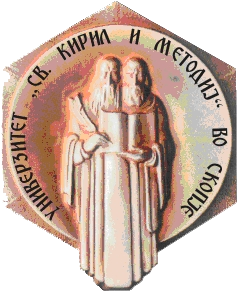VOL 63_2014/039
НАУЧНИ ФАКТИ И ПРЕТПОСТАВКИ ЗА ГЕНЕТСКИ МОДИФИЦИРАНИТЕ КУЛТУРИ: КОМЕРЦИЈАЛИЗАЦИЈА И ПРОИЗВОДСТВО ВО СВЕТОТ
Соња Ивановска1, Мирјана Јанкуловска1, Љупчо Јанкулоски1, Билјана Кузмановска1, Дане Бошев1,
1 Универзитет „Св. Кирил и Методиј“, Факултет за земјоделски науки и храна, Скопје
s_ivanovska@yahoo.com
2Земјоделски институт Скопје
Апстракт
Генетските модификации кај земјоделските култури се вршат повеќе од две децении. За ГМ-културите континуирано се водат дебати и сите земји немаат еднаков пристап кон овие производи. Најголем дел од земјите во светот немаат посеви со ГМ култури, а во некои има и забрана за нивно одгледување. Сепак, од 1996 година површините со ГМ-култури, како и бројот на земји што ги одгледуваат се зголемува. Цел на овој труд е да се направи анализа на одгледувањето на ГМ-култури во светот во периодот од 1996 до 2013 година. Даден е преглед на нивната застапеност според земји, култури и својства. Од резултатите на анализата може да се види дека вкупните површини во 2013 година се зголемиле 100 пати во однос на 1996 година. Бројот на земји се зголемувал постепено до 2011, а потоа опаѓа. Во ЕУ, и покрај тоа што ставот против ГМ-културите е најсилен и понатаму 5 земји имаат посеви со нив. Сојата, пченката, памукот и канолата се најзастапените култури, а во последниве години се зголемуваат и површините со шеќерна репа и луцерката. Освен нив, незначително се застапени папајата, тиквата, пиперката, доматот и тополата. Значаен фактор е што производството, пред сè од шесте најзастапени култури е наменето за индустриски преработки и за добиточна храна, а не за храна на човекот. Најзастапени својства се толерантноста на хербициди и отпорноста на инсекти.
Клучни зборови: генетски модифицирани култури, производство, својства.
SCIENTIFIC FACTS AND ASSUMPTIONS ABOUT GENETICALLY MODIFIED CROPS: COMERCIALIZATION AND PRODUCTION IN THE WORLD
Sonja Ivanovska1, Mirjana Jankulovska1, Ljupcho Jankuloski1, Biljana Kuzmanovska1, Dane Boshev1, Vinko Stanoev2
1 “Ss Cyril and Methodius” University - Skopje , Faculty of Agricultural Sciences and Food in Skopje
Abstract
The genetically modifications of the agricultural crops are performed for more than two decades. Debates over the genetically modified (GM) crops are taking place continuously and all of the countries do not have equal approach to these crops. The most of the world countries do not cultivate GM crops, and some of them have bans on cultivation. However, since 1996 the areas under GM crops and the number of countries with cultivation are increasing. The purpose of this work is to analyze the GM crops cultivation in the period 1996-2013. The review of cultivation is presented by countries, crops and modified traits. The result of the analysis demonstrate that the total area in 2013 have increased 100-fold, compared to 1996. The number of countries growing GM crops was increasing until 2011, reducing for one county afterwards. Within the European Union, beside the strongest attitude against cultivation of GM crops, five countries continue to plant such crops. Soybean, corn, cotton and canola are the four main GM crops grown worldwide. Within the last few years, cultivation of sugar beet and alfalfa is increasing. Beside these principal crops, papaya, squash, sweet pepper, tomato and poplar are grown on small areas. It is important to emphasize that the production of the six most cultivated crops is intended for industrial processing and feed only and not for food. Herbicide tolerance and insect resistance remain to be dominant modified traits of the commercialized GM crops.
Key words: genetically modified crops, production, traits.
Languages:
Pages:



